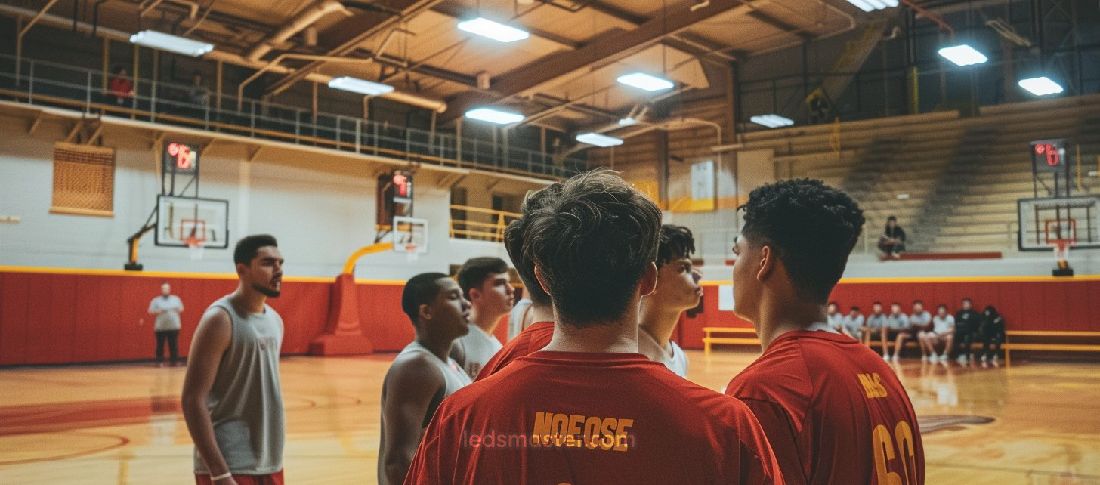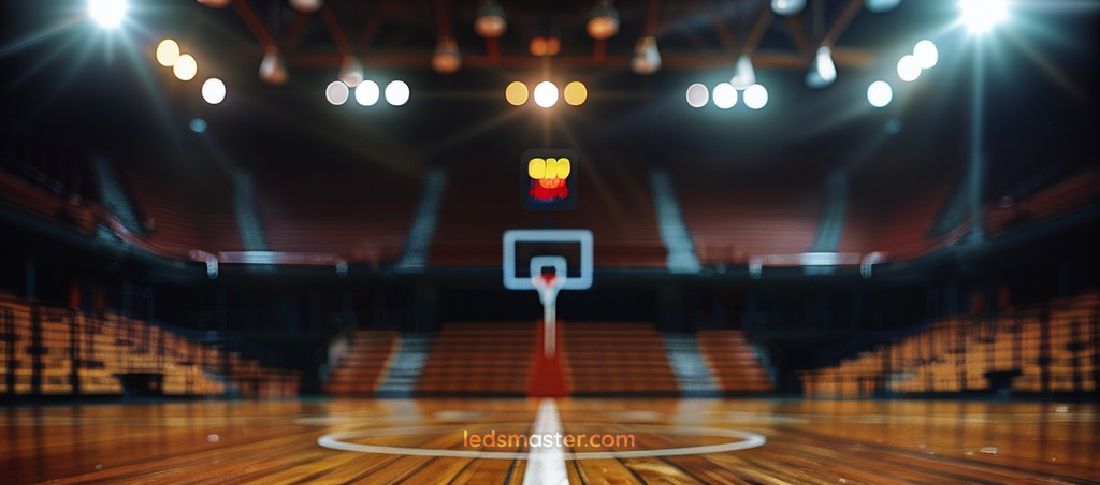Table of Contents
ToggleIntroduction
Installing proper lighting on a basketball court is crucial for ensuring visibility, safety, and optimal playing conditions. Whether you’re setting up new lights or upgrading existing ones, a systematic approach can make the installation process smoother and more efficient.
Installation Process
Planning and Preparation
Thorough planning is essential before installing basketball court lighting to ensure project success. This begins with assessing the current lighting setup or determining requirements for a new system. Evaluation includes court dimensions, lighting needs for different uses and competitions, and compliance with regulations.
Assessing existing lighting involves reviewing fixture types, placement, and effectiveness in providing uniform illumination. This identifies areas needing upgrades for improved technology, light distribution, or glare reduction.
Determining new system requirements involves defining desired illumination levels and uniformity. Factors like court size, pole height, spacing, and fixture types (e.g., floodlights) influence system design. Adherence to standards like those set by FIBA ensures competitive play standards.
Considering local regulations and environmental factors is crucial. Understanding zoning, building codes, and environmental impacts helps meet legal requirements and sustainability goals.
Choosing the Right Lighting System

Choosing the right lighting system for a basketball court is crucial for performance, energy efficiency, and cost-effectiveness. LED lights have become the preferred option due to several advantages.
LED lights are highly energy-efficient, consuming less electricity than traditional technologies like metal halide or fluorescent lights. This efficiency reduces operational costs and supports sustainability goals by minimizing energy use and greenhouse gas emissions.
LED lights also offer exceptional longevity, lasting from 50,000 to over 100,000 hours on average. This long lifespan reduces maintenance needs and costs, providing reliable performance over time.
Additionally, LED lights provide superior light quality with high color rendering and uniform distribution, enhancing visibility and safety on the court. Their instant-on capability ensures immediate illumination, crucial for sports environments where quick adjustments are necessary.
Electrical and Structural Assessment
Before installing basketball court lighting, involving a qualified electrician specializing in outdoor sports lighting systems is crucial. Their expertise begins with a detailed assessment of the existing electrical infrastructure, examining wiring, circuitry, and power capacity to support modern LED fixtures’ energy-efficient demands. If upgrades are needed, the electrician outlines necessary modifications to ensure compliance with safety codes.
Simultaneously, evaluating the structural integrity of poles or mounting structures is essential. The electrician inspects these supports to verify they can safely handle the weight and wind load of new fixtures. Factors such as pole height and spacing are carefully considered to achieve optimal lighting distribution and enhance system longevity. Engaging a qualified electrician ensures a seamless installation process, addressing potential challenges and maximizing the efficiency and safety of basketball court lighting.
Installation of Mounting Structures
Installing mounting structures or poles for basketball court lighting is a critical process requiring thorough planning and precise execution. Initial planning involves meticulous measurements to determine the optimal placement of each pole relative to court dimensions and lighting requirements. This ensures uniform coverage across the playing surface, minimizing shadows and ensuring clear visibility for players. Factors like pole height and spacing are carefully considered to maximize the effectiveness of chosen lighting fixtures.
During installation, each pole is positioned according to a predetermined layout, emphasizing both lighting needs and safety. Proper alignment is crucial to ensure optimal light distribution, achieved through specialized equipment and techniques for secure anchoring—whether embedding poles directly or anchoring to concrete foundations. This robust anchoring not only enhances stability and durability but also mitigates risks such as sway or displacement due to environmental factors like wind load.
Wiring and Fixture Assembly
After securely installing the mounting structures or poles, the next crucial step in basketball court lighting installation is wiring and fixture assembly. This phase demands meticulous attention to detail and strict adherence to local building codes and safety standards to ensure both functionality and safety of the lighting system.
Electricians or installation teams carefully connect electrical wiring from the main power source to each lighting fixture, often routing cables through conduits or trenches for insulation and protection against environmental factors like moisture and temperature fluctuations. Compliance with local electrical codes is paramount to prevent hazards such as short circuits or electrical fires, ensuring the system meets regulatory safety requirements.
Concurrently, light fixtures are assembled according to manufacturer instructions, securely integrating components from LED modules to housing and mounting brackets. Emphasis is placed on tight connections and proper seals to prevent water ingress and corrosion, common in outdoor settings. Weatherproofing measures like gaskets and seals protect against rain, dust, and other environmental elements, ensuring prolonged fixture lifespan and sustained performance.
Fixture Installation and Alignment

Mounting the light fixtures onto the prepared structures is a critical step in ensuring effective basketball court lighting. Each fixture must be carefully positioned to optimize light distribution and minimize glare. This involves precise adjustments to angle and height to achieve uniform illumination across the playing surface and surrounding areas. By strategically placing each fixture, installers can eliminate shadows and ensure consistent lighting quality, essential for player visibility and safety during games.
Proper positioning also considers factors such as the spacing between fixtures to prevent over-illumination or insufficient coverage. By aligning the fixtures according to manufacturer specifications and best practices, installers can enhance the overall performance and efficiency of the lighting system. This meticulous approach not only improves playing conditions but also enhances the aesthetic appeal and functionality of the basketball court, ensuring an enjoyable experience for athletes and spectators alike.
Testing and Adjustment
When the installation of the basketball court lighting system is complete, thorough testing is essential to verify its functionality and performance. This phase involves systematically checking each light fixture to ensure it operates correctly and delivers uniform light output across the entire court surface. Testing procedures typically include assessing factors such as brightness levels, color temperature consistency, and the absence of flickering or irregularities in light distribution.
Adjustments are made as necessary during testing to achieve optimal illumination levels and uniformity. This may involve fine-tuning the positioning or angle of individual fixtures to eliminate any remaining shadows or areas of insufficient light coverage. It’s crucial to address these adjustments promptly to ensure that the lighting system meets the specified performance standards and regulatory requirements for sports facilities.
Final Inspection and Commissioning
After completing testing and necessary adjustments to the basketball court lighting system, a final inspection is conducted to ensure all aspects of the installation meet rigorous standards. This comprehensive inspection verifies compliance with safety regulations, electrical codes, and any specific requirements outlined for sports facilities. Each component, from the wiring and fixtures to the structural integrity of mounting structures, is meticulously reviewed to confirm functionality and adherence to industry standards.
Formal commissioning of the lighting system follows the successful completion of the final inspection. This process involves documenting detailed records of the installation process, testing procedures, and performance parameters. By documenting these aspects, stakeholders establish a baseline for future maintenance and reference, facilitating efficient troubleshooting and ensuring consistent performance over time. This formal documentation also serves as a record of compliance with regulatory guidelines, providing assurance that the lighting system is safe, reliable, and optimized for its intended use on the basketball court.
Maintenance and Monitoring
Maintaining optimal basketball court lighting requires a systematic maintenance schedule. Regular fixture inspections identify wear, damage, or issues like loose fittings, corrosion, or moisture ingress that affect functionality. Cleaning lenses maintains light clarity, preventing glare or dark spots. Checking electrical connections ensures secure wiring and addresses wear or overheating risks to prevent malfunctions and ensure safety. Adhering to manufacturer and safety standards during inspections maintains compliance and operational efficiency.
Continual performance monitoring tracks light levels, color rendering, and energy consumption to detect deviations and inform adjustments or upgrades. Analyzing data supports informed decisions to optimize lighting quality and efficiency. Regular adjustments, such as fine-tuning angles or updating controls, adapt to environmental conditions and usage patterns, ensuring reliability and lifespan while meeting athletes’ and spectators’ needs for a safe, enjoyable sports environment.
Conclusion
Installing proper lighting on a basketball court is crucial for visibility, safety, and optimal play conditions. Thorough planning, including assessment of current setups or defining new system requirements, ensures effective installation. LED lights are preferred for their energy efficiency, long lifespan, quality light output, and instant-on capability. Engaging a qualified electrician for electrical and structural assessments ensures compliance with safety codes and durability against environmental factors. Precise installation of mounting structures or poles, followed by meticulous wiring and fixture assembly, ensures functional and durable lighting. Proper fixture alignment minimizes glare and maximizes light distribution for improved playability and aesthetics. Testing, adjustments, and final inspections confirm performance and safety standards are met. Establishing a maintenance schedule and monitoring system performance sustain optimal lighting conditions over time, ensuring reliable play environments for athletes and spectators.

